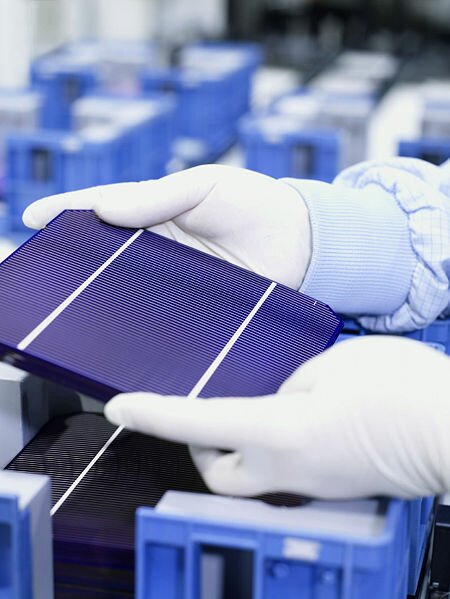BROWSE COUNTRIES/ TERRITORIES
A flare-up over going solar
The sun’s energy may be inexhaustible, but is the production of solar panels sustainable?

Solar power was originally developed to provide energy to satellites that orbit the earth. Solar powered devices have expanded dramatically in recent years. Most of us use calculators powered by solar cells and advances in technology have made it possible to conceive of solar powered homes, cars, machinery and devices. There is no question that using solar power is in the best interest of the worldwide economy and environment.
“Solar panel” is a generic term used to describe a device that collects and converts solar energy into electricity or heat. In this article, we focus on photovoltaic modules (PV), which are used to generate electricity.
Like wind power, solar energy is spotty, working at full capacity an average 20% to 30% of the time. Solar’s big advantage is that it supplies the most electricity midday, when demand peaks. And it can be located at homes and businesses, reducing the need to build pollution-belching power plants and unsightly transmission lines. In states such as California, with high electricity prices and government incentives, solar power is already a bargain for most customers. Wal-Mart recently said it’s putting solar panels on more than 20 of its stores in California and Hawaii. Google blanketed its headquarters with 9,212 solar panels, enough to light 1,000 homes.
Solar power does not lead to any harmful emissions during operation, but the production of the panels leads to some amount of pollution. One issue that has often raised concern is the use of cadmium in Cadmium telluride (CdTe) modules (not all PV technologies use CdTe). Cadmium in its metallic form is a toxic substance that has the tendency to accumulate in ecological food chains. The amount of cadmium used in PV modules is relatively small and with proper emission control techniques in place the cadmium emissions from module production can be almost zero. Most of these emissions actually arise through the use of coal power for the manufacturing of the modules, and coal and lignite combustion leads to emissions of cadmium.
Solar power can be used where there is no easy way to use electricity to a remote place, but is unreliable unless you’re in a very sunny climate. Luckily for most in the Asian tropics, this isn’t too much of an issue. The downside though is that majority of Asians live in poverty and it is very expensive to build solar power stations.
Solar cells cost a lot in comparison to the amount of energy they will produce over their lifetime, and solar power requires a means to store the electricity that is produced. Storage of this electricity is an issue and a reliable back-up means of electricity is required. Solar power does not work at night, thus the need for back-up sources of electricity.
Before you invest in solar panels for your home or office, it may be wise to consider other ways of cutting your energy consumption. By converting to smart devices and reducing if not eliminating the usage of power-hungry appliances like dishwashers, dryers, and air conditioners you might save yourself the costs before trying to cut them.
Login or Register
 Debby Ng is an environmental photojournalist whose work has been published in several regional and international magazines, including the award-winning Lebanese magazine, Environment & Development. She has also worked with numerous Asian and international non-government organisations such as the TRAFFIC, World Wide Fund for Nature (WWF), World Society for the Protection of Animals (WSPA) and the Environmental Investigation Agency (EIA).
Debby Ng is an environmental photojournalist whose work has been published in several regional and international magazines, including the award-winning Lebanese magazine, Environment & Development. She has also worked with numerous Asian and international non-government organisations such as the TRAFFIC, World Wide Fund for Nature (WWF), World Society for the Protection of Animals (WSPA) and the Environmental Investigation Agency (EIA).
www.debbyng.net
www.pulauhantu.org
- Asian Dynasties and History
- Conservation of the Environment
- Definition: Culture
- Economy and Economics
- Food and Recipe
- Geopolitics and Strategic Relations
- Health and Body
- Of Government and Politics
- Religion and Practices
- Social Injustices and Poverty Report
- Society, Class and Division
- Unrest, Conflicts and Wars
































 Another Point
Another Point From Jerusalem to the West Bank
From Jerusalem to the West Bank
Comments
Post new comment